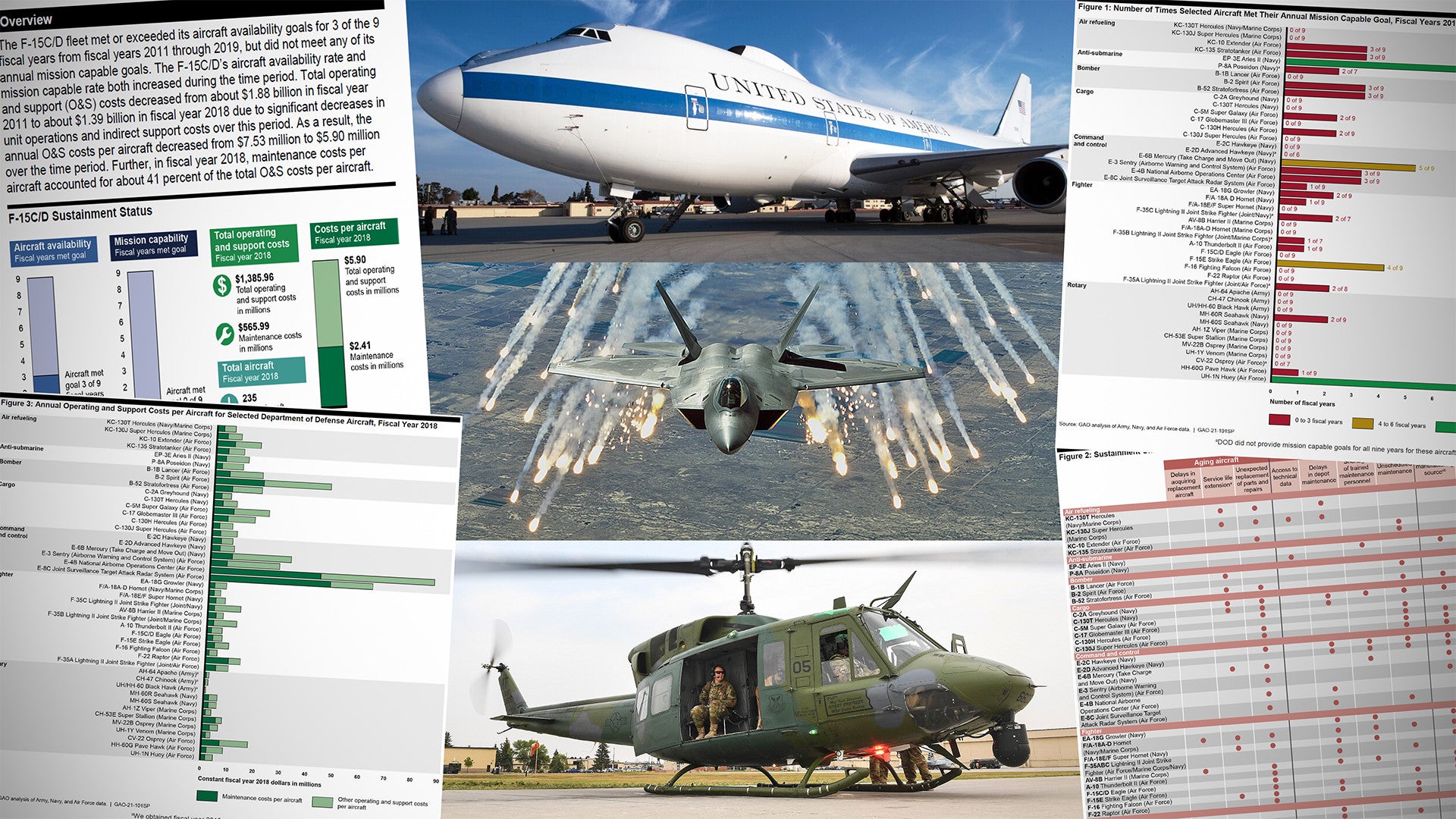A Congressional watchdog, says that only three types of U.S. military aircraft reached annual average mission capable rate goals during most of the years between Fiscal Years 2011 and 2019. The Air Force’s UH-1N Twin Huey helicopter was the only type to hit its target rate every single year during that period. Of the 46 types across the services covered in a new report, 24 of them never met those yearly readiness milestones.
The Government Accountability Office (GAO) released its report on U.S. military aircraft mission capable rates, which also covers fluctuations in operations and maintenance costs, on Nov. 19, 2020. This notably comes just over two years after former Secretary of Defense James Mattis underscored concerns about this issue in a memorandum calling for the Air Force, Marine Corps, and Navy to do everything in their power to get the mission capable rate of their various fighter jet fleets up to 80 percent.
“Average mission capable rates for the selected Air Force, Navy, and Marine Corps aircraft have fallen since fiscal year 2011, while average mission capable rates for the selected Army aircraft have slightly risen,” GAO noted. “Program officials provided various reasons for the overall decline in mission capable rates, including aging aircraft, maintenance challenges, and supply support issues.”
It’s important to note that the GAO examined annual mission capable rates across different aircraft fleets, rather than full mission capable rates. The difference is that an aircraft is deemed to be mission capable when it can perform at least one of its assigned missions, rather than all of them, which is full mission capable, also referred to as “Code One.” Mission capable rates are also different from basic availability rates, which only cover whether or not an aircraft or helicopter can fly at all.
It’s also worth noting that the different services track mission capability differently in some cases. Some services were not able to provide GAO with annual mission capable rate targets for each fiscal year between 2011 and 2019 for some aircraft types.
The chart below shows the report’s core findings:
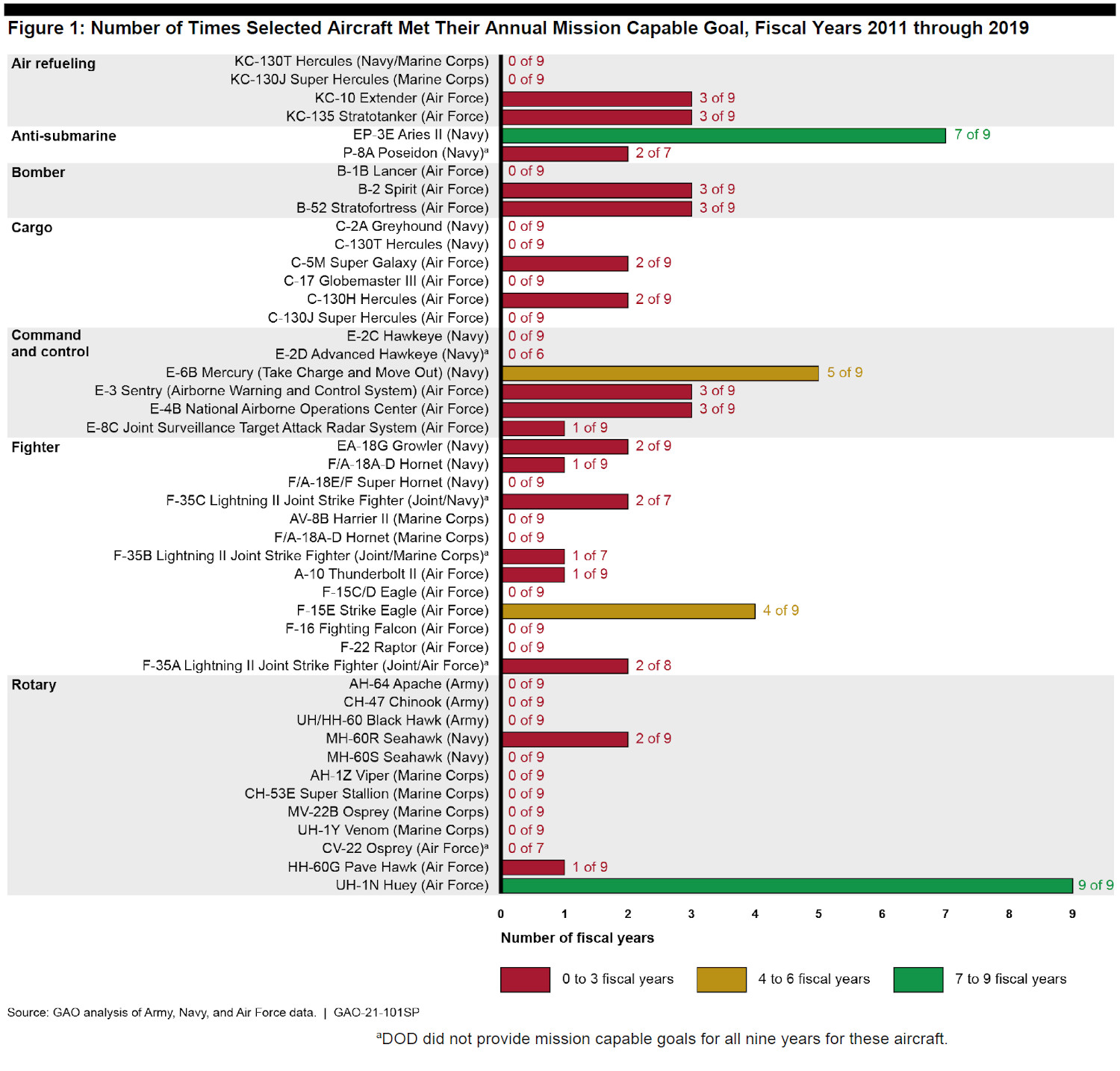
The obvious standout is the Air Force’s UH-1N Twin Huey fleet, which hit its mission capable rate goal every year. These helicopters, which you can read about more in this past War Zone piece, help provide security across the service’s Minuteman III intercontinental ballistic missile (ICBM) fields, as well as VIP transport and other training and support roles at bases around the world.
In 2016, the Air Force began a competition to replace these aging helicopters, citing availability and sustainment concerns, something that seems somewhat curious given the data presented here. In 2018, the service picked the MH-139A, now nicknamed the Grey Wolf, as the UH-1N’s successor.
The other two types that hit their annual mission capable rate targets for the majority of the fiscal years in question were the Navy’s EP-3E Aries II intelligence, surveillance, and reconnaissance (ISR) planes and the U.S. military’s fleet of E-6B Mercury jets, which serve a critical role in the country’s nuclear deterrent architecture. The E-6Bs have specialized equipment for communicating with submerged Ohio class ballistic missile submarines and Minuteman III launch control centers and can even command the launch of the latter weapons from the air, if necessary. You can read more about these “doomsday” planes and their function in America’s nuclear command and control architecture in these past War Zone pieces.
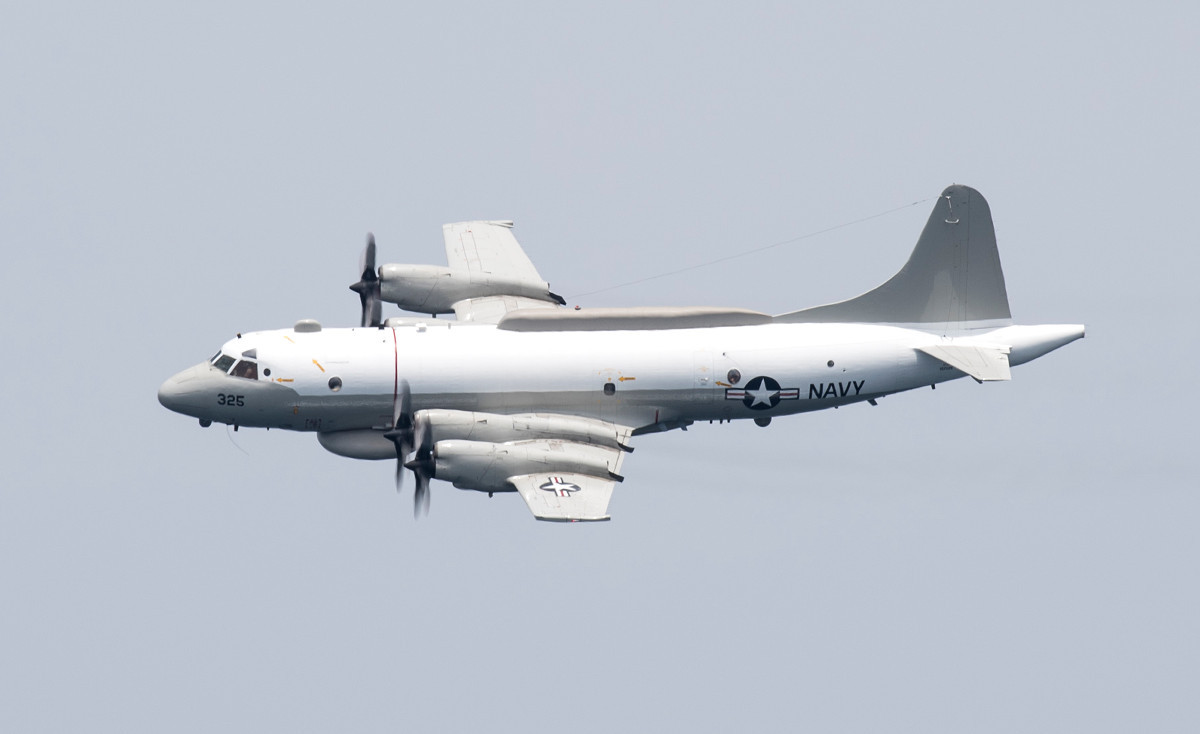
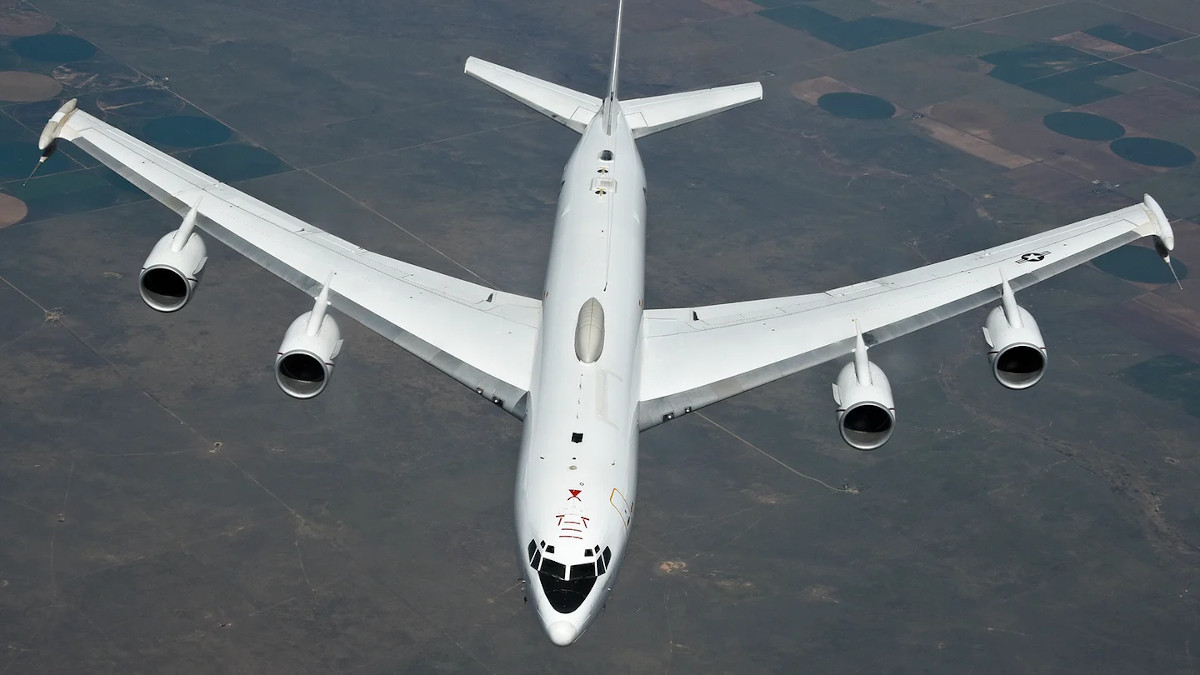
The Air Force’s F-15E Strike Eagle combat jets, one of the service’s most in-demand platforms for actual combat operations around the world, got close to meeting its yearly mission capable goals more than 50 percent of the time between the 2011 and 2019 Fiscal Years. Another 17 types, including the Air Force’s B-2 Spirit and B-52 Stratofortress bombers and the Navy’s EA-18G Growler electronic warfare aircraft and MH-60R Seahawk helicopters, hit their annual targets at least once in that same time frame.
The Air Force’s F-35A Joint Strike Fighters and the Navy’s F-35Cs both met annual mission capable rate goals in two of the nine years in question, while the Marine Corps’ F-35Bs reached the milestone just once. This is perhaps not surprising to regular readers of the War Zone who will remember that details emerged in 2019 that showed very poor mission capable rates in recent years for all three types. This included a period lasting more than two years where the full mission capable rate for the Navy’s F-35C fleet never rose above two percent.
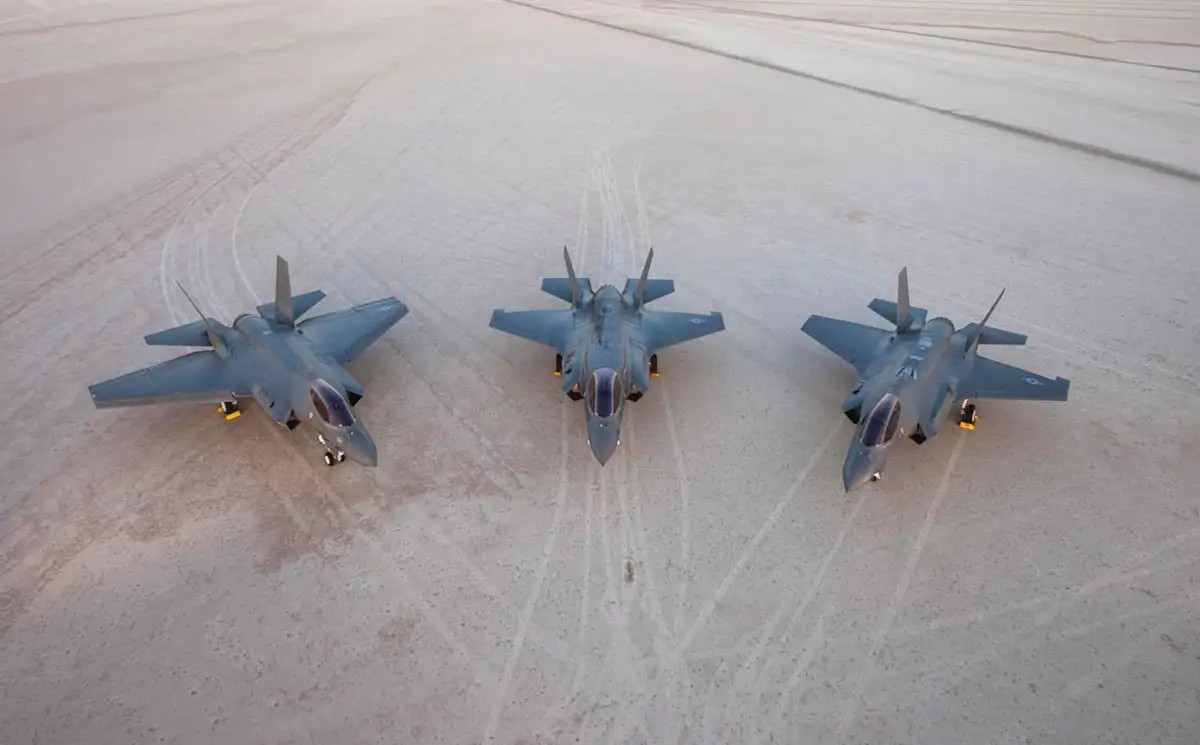
Then there are the 24 types that never met these goals. Some of these entries are not surprising, such as the Air Force’s overworked B-1B Bone bombers or its F-22 Raptor stealth fighters, both of which have been the subject of much public attention over extremely poor readiness rates in recent years. The same goes for the Navy and Marine Corps F/A-18C/D Hornets and F/A-18E/F Super Hornets. That the V-22 tilt-rotors that the Marines and Air Force operate struggle with mission capable rates is also something that is well known.
That the Air Force’s F-16 Viper fleets have not met annual mission capable rate targets since Fiscal Year 2011, even before Mattis set that goal at 80 percent, is perhaps more notable. That all three of the Army’s primary helicopter types – the AH-64 Apache, the UH-60 Black Hawk, and the CH-47 Chinook – did not once hit this milestone in nearly a decade is significant.
It’s worth noting that some aircraft fleets that failed to reach the set annual goal may have been close to doing so and may have had periods within a single fiscal year at or above the target rate. GAO said that in the 2019 Fiscal Year, six types were short of their goal by five percent or less. Another 18 were between six and 15 percent short of hitting the target. However, 11 types failed by a margin of 25 percent or more.
As noted, a wide variety of factors impacted mission capable rates, as well. GAO’s report included another chart, seen below, that covers the most common issues that services cited and which ones applied to which aircraft fleets.
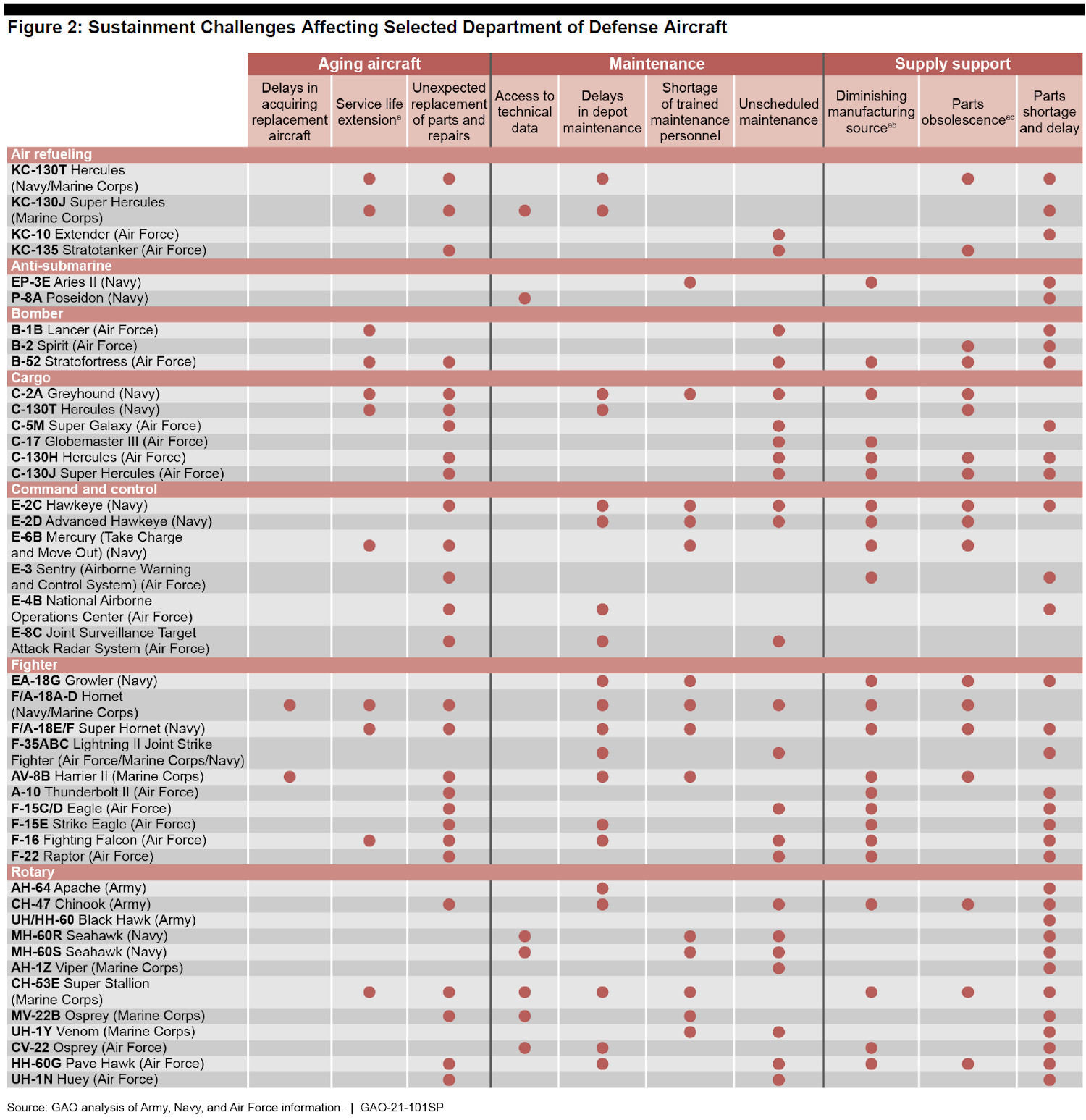
These myriad factors help explain, at least in part, the multiple instances where newer aircraft have worse mission capable rates than older types, which generally become increasingly more costly and time-consuming to maintain as time goes on as a rule. It also speaks to the effort required to operate and maintain increasingly more complex higher-end modern combat aircraft, especially stealthy types.
GAO also took this opportunity to examine how much it cost the services to operate and maintain all of these different aircraft types, finding that some costs went up and down, while others stayed relatively consistent, again depending on a host of factors.
“The total fiscal year 2018 O&S [operations and sustainment] costs for the aircraft we reviewed ranged from a low of $118.03 million for the Navy’s fleet of KC-130T Hercules to a high of $4.24 billion for the Air Force’s fleet of KC-135T Stratotankers, with a key factor being the size of the fleet,” GAO’s report said, as an example. “Maintenance costs also varied widely across the aircraft, due to the size of the aircraft fleet and the particular challenges associated with the aircraft. For example, maintenance costs ranged from $43.91 million for the Navy’s fleet of KC-130T Hercules to $2.02 billion for the Air Force’s fleet of C-130H Hercules in fiscal year 2018.”
The chart below offers an interesting breakdown of the annual costs to operate and maintain different aircraft across the U.S. military for the 2018 Fiscal Year.
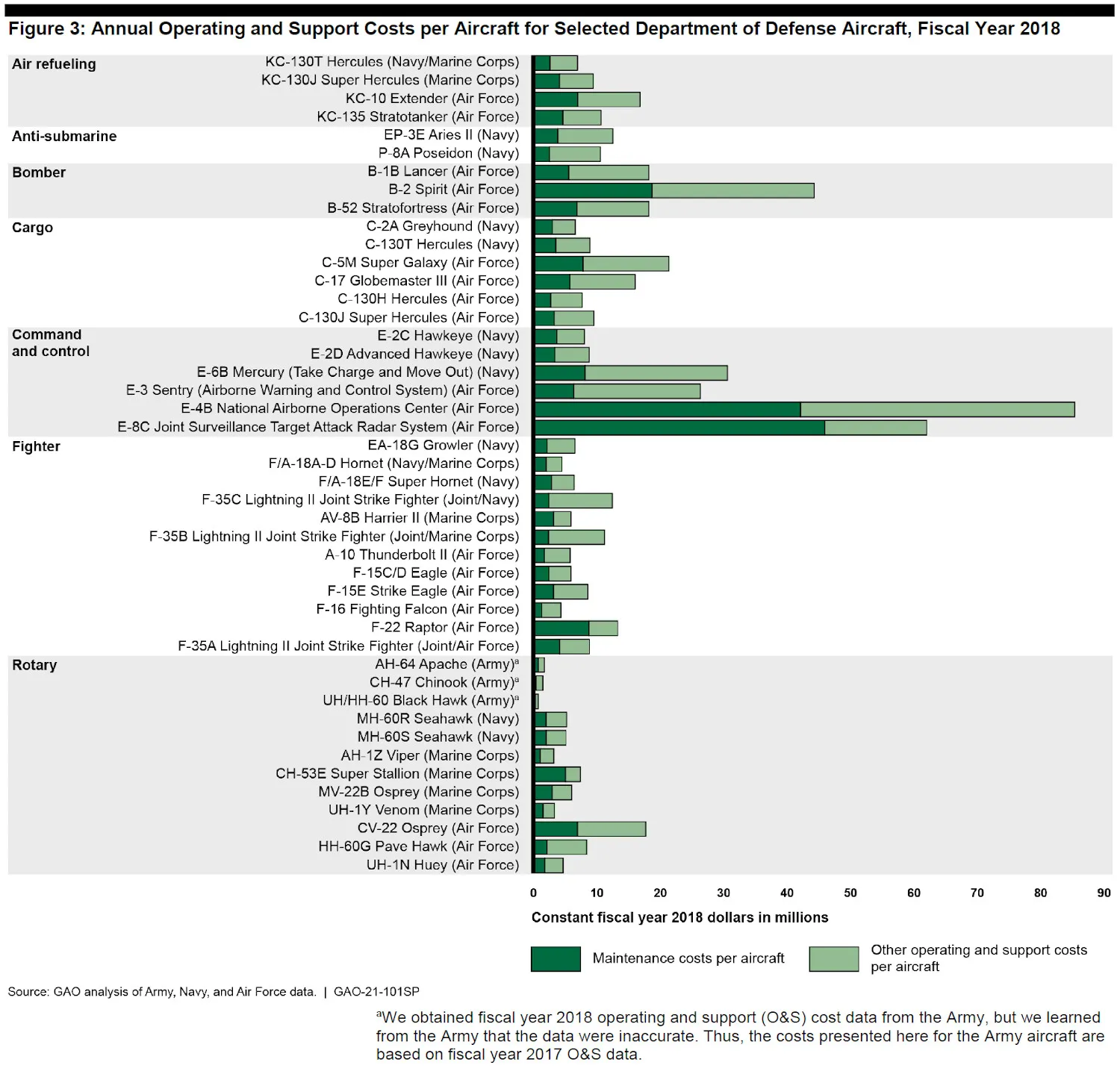
What immediately leaps out in the chart above is the whopping $85 million it cost in Fiscal Year 2018 to operate and maintain each one of the Air Force’s four E-4B Nightwatch airborne command post aircraft, another kind of doomsday plane that you can read more about in this past War Zone piece. This goes a long way in helping to explain why the service is looking to replace these Boeing 747-based aircraft.
It’s also very interesting to see that the per aircraft costs associated with the Air Force’s E-3 Sentry Airborne Warning and Control System (AWACS), around $60 million, are higher than those for the B-2 stealth bomber, somewhere between $40 and $50 million, which is notoriously expensive to operate. Some of that may have to do with the larger size of the overall E-3 fleet, as well as the increasing age of those aircraft, which the service has also been looking into replacing.
It’s notable that the Navy’s F/A-18E/F Super Hornets also cost more per aircraft to operate and maintain than the Legacy F/A-18C/D Hornets it, as well as the Marine Corps, operates. This may well have to do, in part, with the dwindling size of the overall Legacy Hornet fleet, as well as the larger and more complex nature of the Super Hornet design, which is now in the process of receiving major additional upgrades.
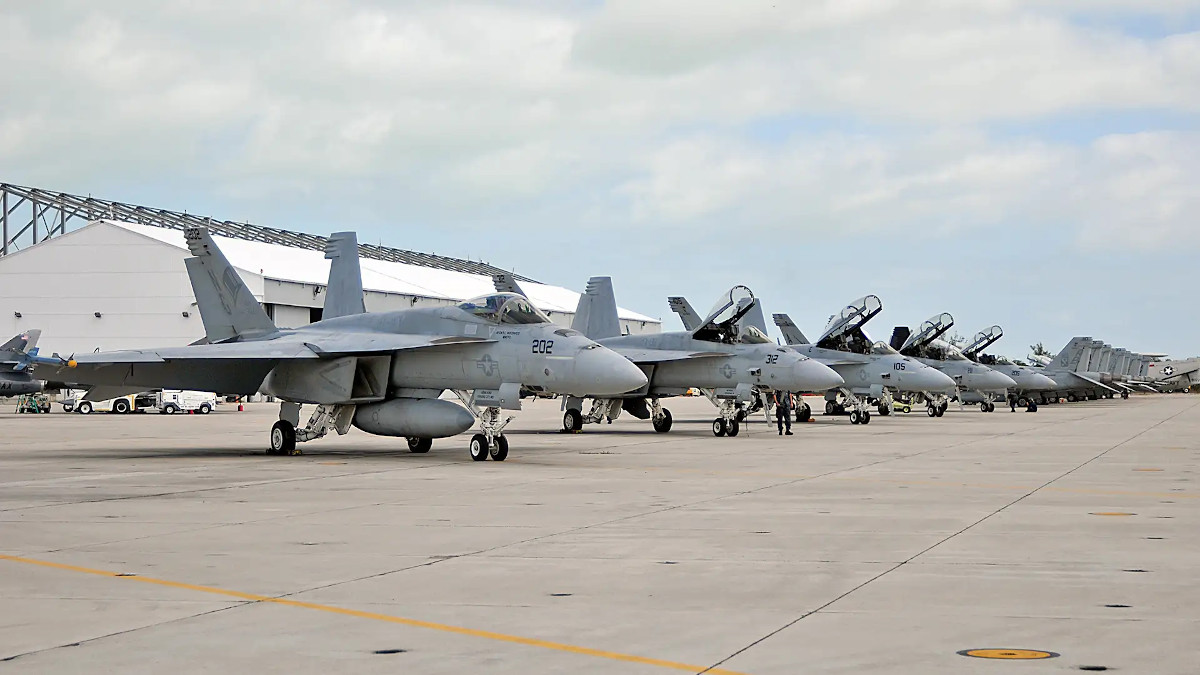
It’s fascinating to see how cheap the Army’s helicopter fleets are to operate and maintain compared to the rest of the U.S. military’s aviation fleets, too.
While there are many different reasons why certain aircraft fleets might see a drop in mission-capable rates or why services might see changes in how much it costs to operate and maintain certain types, this data is still a significant indicator of just how available and how efficient the U.S. military’s various aviation assets actually are. It’s also very valuable when looking at how the services, as well as Congress, decide where to make additions or cuts in the defense budget to try to increase readiness rates and improve overall capacity for certain mission sets.
“The Department of Defense (DOD) spends tens of billions of dollars annually to sustain its weapon systems in an effort to ensure that these systems are available to simultaneously support today’s military operations and maintain the capability to meet future defense requirements,” GAO’s report said. “Operating and support (O&S) costs historically account for approximately 70 percent of a weapon system’s total life-cycle cost — costs to operate and sustain the weapon system from initial operations through the end of its life — and include costs for repair parts, depot and field maintenance, contract services, engineering support, and personnel, among other things.”
The Air Force and the Navy, in particular, are both in the midst of major efforts that could transform and revolutionize their aviation fleets. Much of the debate over how best to proceed is predicated on the costs required to keep existing aircraft, especially certain aging types, going now and how it might be possible to do things differently in the future. Operational and maintenance costs are a particularly serious area of concern with the F-35 fleets. The Joint Strike Fighter program, as a whole, is presently projected to have a total lifetime cost of nearly $1.2 trillion through 2070.
Defense budgets may well stagnate, or even contract, in the coming years, which will only increase the pressure on services to find a way to balance the need to provide mission-capable aircraft now and the need to modernize their aviation fleets. If this report is anything to judge by, those challenges only look to be increasing in scope and complexity.
Contact the author: joe@thedrive.com
